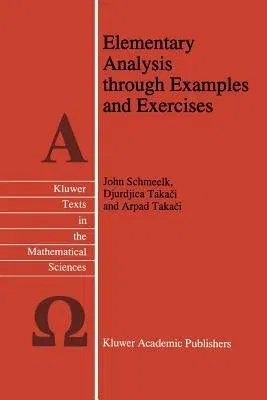John Schmeelk
(Author)Elementary Analysis Through Examples and ExercisesPaperback, 7 December 2010

Qty
1
Turbo
Ships in 2 - 3 days
In Stock
Free Delivery
Cash on Delivery
15 Days
Free Returns
Secure Checkout
Part of Series
Texts in the Mathematical Sciences
Part of Series
Texts in the Mathematical Sciences (Closed)
Print Length
321 pages
Language
English
Publisher
Springer
Date Published
7 Dec 2010
ISBN-10
9048145902
ISBN-13
9789048145904
Description
Product Details
Book Format:
Paperback
Country of Origin:
NL
Date Published:
7 December 2010
Dimensions:
23.39 x
15.6 x
1.75 cm
ISBN-10:
9048145902
ISBN-13:
9789048145904
Language:
English
Location:
Dordrecht
Pages:
321
Publisher:
Weight:
467.2 gm

